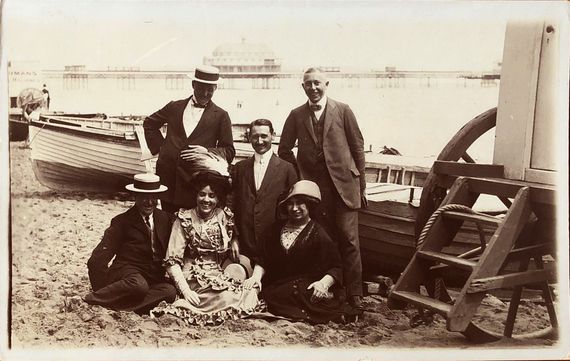

Life and Activities
Margarit Babayan was born in 1874, in Gotha, Germany, into a family of intellectuals. Avetik Babayan, Margarit’s father, originally from Alexandrapol, was a famous doctor in the Caucasus and author of several books about healthcare and public life. Margarit’s mother, Sofia Babayan was an educator and a public figure, known as the founder of the first kindergarten in Tbilisi in 1880.[1]
Along with her two sisters, Shushanik and Armina, Margarit was raised in 19th century Tbilisi – the cultural and educational center of Armenians at that time. From an early age, the Babayan sisters were surrounded by music and the arts. Sofia Babayan spared no effort to discover the talents of her daughters and ensure that they receive a proper education. Years later, Margarit would become one of the most famous mezzo-sopranos in Paris, Shushanik would excel in piano, and Armina would be described as one of the most subtle and noble painters of Paris. [2]
At the age of six, Margarit was already playing piano. She initially studied at the Tbilisi Music College, and then moved to Dresden, Germany to continue her piano classes. However, Margarit soon realized that playing the piano was not enough for her; she decided to train in singing and moved to Paris to continue her education under the guidance of French professionals.
During her studies, Margarit was writing articles about music and various performers for several Armenian magazines and newspapers such as “Ardzagank,” “Mshak,” as well as for the Russian “Caucasus,” and “Novoe Obozrenie” under the pseudonym Enve. In 1896, 22-year-old Margarit published the Armenian version of Victor Wilder’s “Beethoven” – a study dedicated to the life and activities of the famous German composer.
After finishing her studies she returned to Tbilisi and started to perform in various cities in the Transcaucasus as a mezzo-soprano and a pianist.
In 1901, she was invited to teach vocals at the Tbilisi Music College. During this period, Margarit was already a well-known singer in the Transcaucasus, and her performances were being widely discussed in various media. [3]
“It was 1911, in July, in Paris. Those were extremely hot days and I was getting ready to go to a summer house. Someone knocks at the door unexpectedly. It’s Komitas, looking very tired: he had just arrived from his tour in Egypt and Western Armenia. Hardly saying hello, he runs to the piano, and starts singing with excitement and showing me the new songs that I have not heard yet, songs that I am not familiar with. The circumstances of that summer gave me the opportunity to spend two weeks with him on an island called Wight in England where I got the chance to be fascinated by him even more.”[5]
“As we listened to the sounds of the waves, at times so tender and at others so violent, Komitas would liken them to the sounds of the Armenian language. Sitting on the sand, he would sing new songs, while a cold British moon overhead would look down in bewilderment, unable to understand which land such ardent melodies could come from. And I was his sole audience, along with the frowning silhouette of the rocks and the rippling waves.”


Margarit Babayan as a schoolgirl in Tbilisi,1880s .


















From the Forgotten Pages of History: The Resistance of Louise Aslanian
From Tabriz to Paris, from resistance to a Nazi concentration camp...this is the story of Louise Aslanian, an Armenian woman whose convictions, commitment and words have largely been forgotten.
Read moreFrom the Forgotten Pages of History: The Life and Times of Mari Beylerian
Western Armenian writer and editor Mari Beylerian perished during the 1915 Armenian Genocide. While there is scarce information about her life, she left behind the legacy of Ardemis, a monthly magazine published in Egypt and devoted to women’s rights.
Read moreFrom the Forgotten Pages of History: The Tragedy of Maro Alazan
The four tragedies of Maro Alazan based on her unpublished memories- Genocide, Soviet prison, exile and return from exile. The untold story of an incredible woman and her resilience in life and love.
Read more



